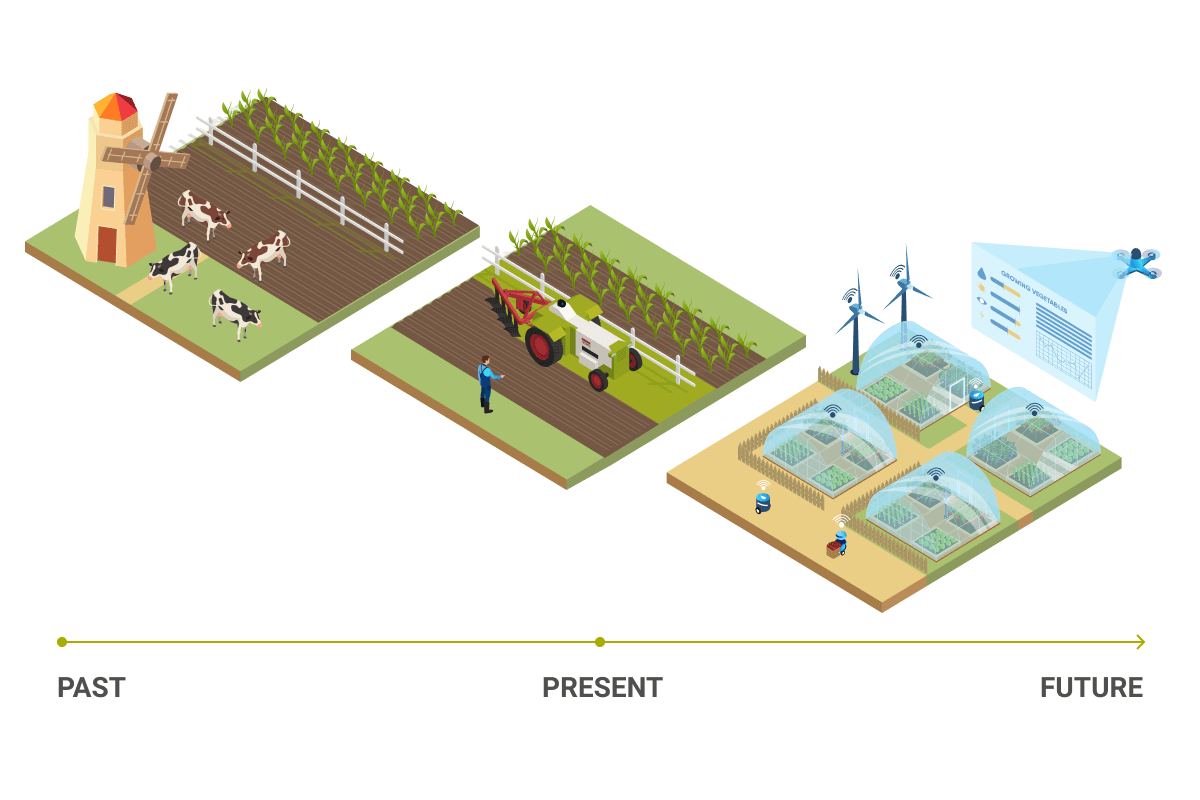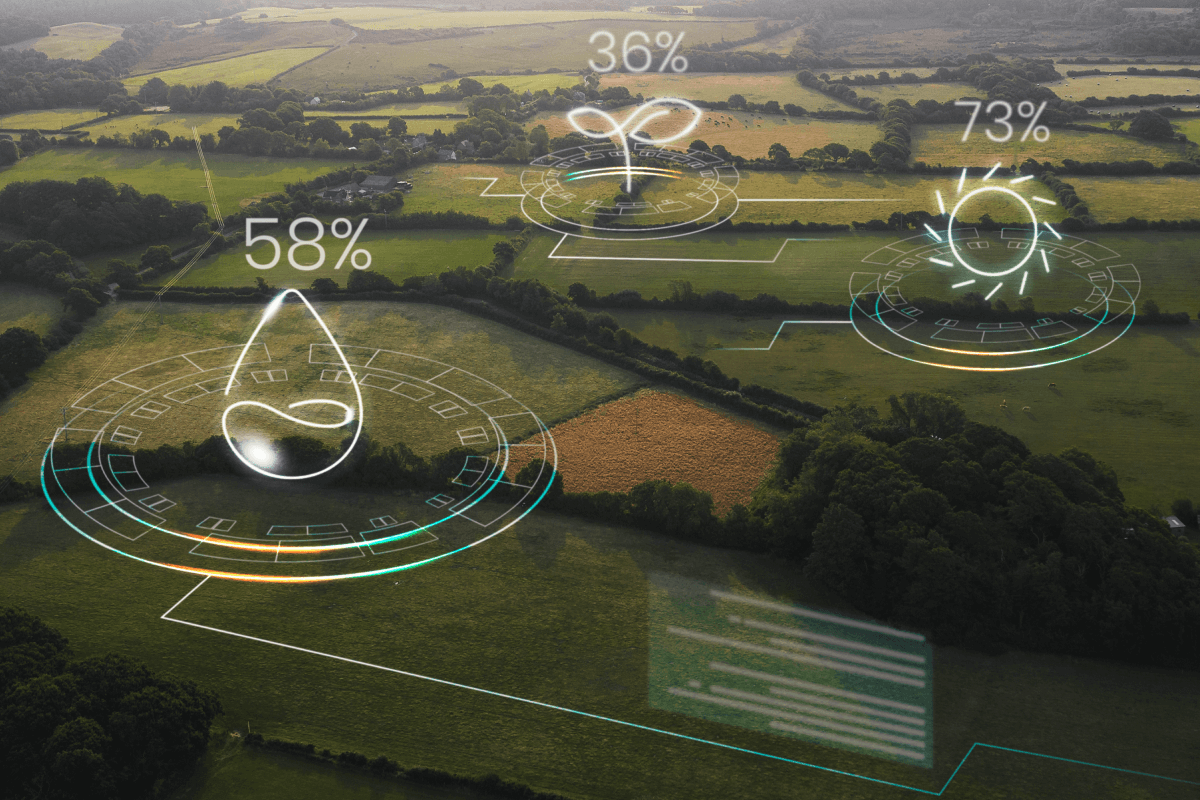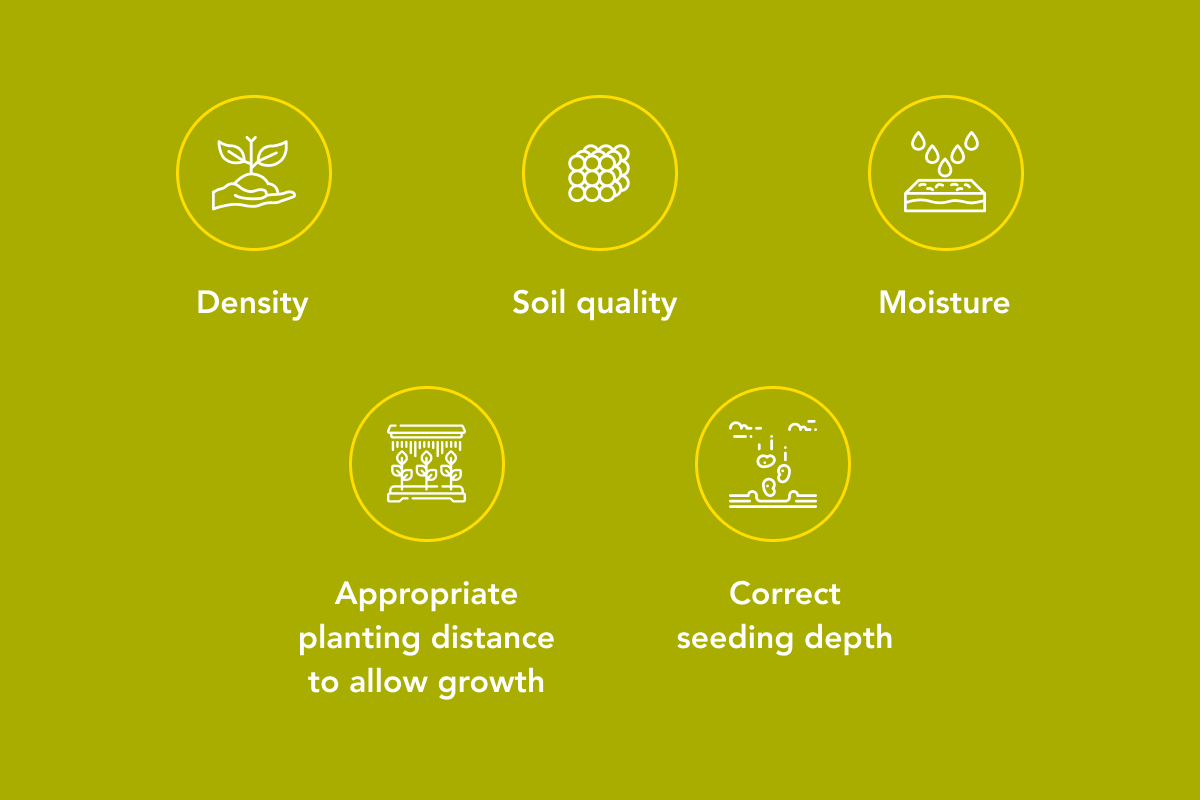Smart farming has the huge potential to deliver a more productive and sustainable form of agricultural production based on a more precise and resource-efficient approach.
People started thinking about improving farming when they planted the first grain in the soil: there have always been ways of making agriculture more efficient. The desire for improvement brought humankind to the stage where we are now. Farming and agricultural industries are currently vitally important for us in view of global climate change.
However, further improvement is possible only with technologies, Internet of Things technologies in particular.

In fact, technologies have been moving the industry forward and enhancing its efficiency over time. In the following decades, farming and new smart and even high-tech ways of agriculture will become more and more important. The Internet of Things for agriculture and innovative technologies work together to optimize productivity.
The enhanced industry itself can cover many needs that people are currently facing. For example, the need in the workforce for agriculture, which is, according to the IoT Congress, currently declining, as well as the need to monitor weather/field conditions and environmental factors influencing farming. Or in simple words, IoT can help to gather the necessary data.
IoT applications for agriculture and smart farming encompass software, hardware, sensors, and other significant parts. There are several areas and functions that can be successfully covered by IoT for farming. For that, we apply the newest decision-making and monitoring solutions.
The Impact of Farming on Climate Change
Farming is one of the biggest influencers of greenhouse emissions and anthropogenic processes of changing the earth’s surfaces overall.

As the population grows, so should the farming productivity in order to meet the demand and satisfy all the needs. Securing the need for food is one of the most important aspects of human development. However, it naturally creates a negative effect on climate. Deforestation, emissions, water shortages, all these damaging impacts come from farming and excessive land usage.
According to Environmental Reports, farming, and agriculture provide one of the highest shares of land clearing impacts, which is even bigger than building industry, construction, and transportation. Employing IoT in agriculture may drastically help in the struggle to reduce the climate impact while simultaneously providing food security.
The key challenge in this situation is to maintain food security and decrease the environmental impact. This issue united food supplies, water shortages, emissions, and overall productivity of agriculture.
How Can IoT in Agriculture and Smart Farming Help in Meeting Climate Change?
The Internet of Things in agriculture is able to address various challenges that we are currently facing. It helps with:
- Empowering and improving any type of monitoring (from growth and contaminators, weather, to storage and delivery of the goods);
- Enhancing transportation and supply chains;
- Improving the way plants and crops treatment and growth;
- Decreasing climate change and saving natural resources;
- Monitoring crops remotely.
Monitoring of Meteorological Conditions
Weather monitoring in smart farming is used to improve precision. It is part of the precision farming approach in agriculture when we are using smart devices, enabling valuable data to get better results.
Weather inevitably influences farming results. But it can also help to cut the necessary costs and manage the available resources, like water. Another example is knowing when it is going to rain, which helps farmers to distribute the necessary quantities of water and save some water resources, which in some areas of Earth can be scarce.
IoT is extremely valuable for data gathering and monitoring for farmers to be able to address the changes and apply new approaches. For instance, new technologies are able to monitor weather forecasts and how the weather might behave, which can affect the farming approach. This will respectively influence how farmers can respond and save the crops.
IoT Sensors for Agriculture and Evidence Control
Applying sensors and intelligent solutions is part of the smart fielding and farming industry, as well as greenhouse farming. The industry employs sensors’ usage for various purposes. We mainly use it for field/greenhouse activities planning and resource optimization. Sensors enable proper fertilizers usage, watering, and monitoring of crops for health, humidity, irrigation, and other factors. IoT sensors for agriculture are also able to do mapping and topography.

There is also the type of sensors that help farmers to understand the sun impact and light compensation that impacts the plants’ growth. There are also weather stations that, in combination with other sensors, software, and tools, help to monitor the various aspects of farming field conditions. All this information is later compiled in reports. They assist landowners, growers, and farmers in their activities.
Sensors are physical devices being part of the IoT complex solutions. They are vigorously employed to gather any data. There are various types of sensors applied for agricultural industry use. For example, there are topographic sensors. These sensors are used for improved precision in fielding. They help to use the farming location properly and define necessary patterns for the crops. Another example is IoT chemical sensors. They are applied when we need to analyze chemical conditions. These can be analysis of the soil (moisture, absorption, composition, or salinity), detecting the pests, and infectious plant diseases. Farmers can also monitor grain, crops, livestock, and field equipment used.
Monitoring of Carbon Footprint
For centuries, we humans have been leaving our carbon footprints, causing drastic effects on Earth. Monitoring the impact of carbon footprint is both a process and a tool aimed at helping us in combating global warming and adaptation. According to OECD, monitoring agricultural performance, and carbon footprints is able to guide the choices we make and address climate change. Monitoring of carbon footprint will become possible with Internet of Things technology.
It is possible to monitor the land usage and water consumption, as well as the whole supply chain in order to make all the processes related to food security and agriculture more sustainable and make any input/output better.
Different land areas contain various amounts of pollution, some more, some less. Cleaner areas naturally fit more for agricultural growing purposes. However, due to the lack of farming land, people are trying to use any free surfaces. Overall, urban farming is also used for growing plants, fruits, and vegetables. Therefore, one needs reliable monitoring in order to detect pollution or any inputs so that it wouldn’t be dangerous to consume those plants.
There is also another side of the coin. Farming is contaminating the environment itself with fertilizers and other means. IoT can address it by accessing real-time data and monitoring any inputs or influencing factors IoT. These results in sustainable and efficient land use, and healthier food for us.
Altogether, the benefits of smart agriculture using IoT projects are:
- Saving efforts;
- Being careful about spending resources;
- Empowering land users to make timely decisions;
- Improving productivity, volumes, quality, health of agricultural products, and food security;
- Enhancing any operational processes;
- Having an enormous capacity to address negative climate impact.
To Sum Up
Overall, IoT is greatly assisting in reducing carbon footprint. The most important aspects of the industry are to maintain food security for the population, production efficiency, and decrease the negative impact on climate.
IoT in agriculture allows smart farming to take a beneficial turn in enhancing the industry. Relevant environmental, meteorological, and chemical land use data gathering and monitoring, alongside other complex IoT solutions, improve overall decision-making for landowners and growers. Based on this, we are able to address any circumstances and react timely. It saves crops, saves our efforts, improves the productivity of agriculture, as well as provides alerts and effective responses to environmental needs.
Together with Softengi, you can successfully create a positive impact with IoT projects on agriculture.





